When you give a person a rose, the first thing they often do is smell it. We’ve grown roses in our gardens for hundreds, if not thousands of years with fragrance in mind and continue to do so today. As a garden plant, roses offer us a wide variety of varieties with fragrance of all different colours, flower forms and plant types. No other garden plant comes close to what the rose offers in terms of fragrance.
Fragrance amongst roses is highly subjective; we are all different in what we perceive as fragrant or not so what one may find as a strong scented variety, the next person may detect little or no scent. I’m told fragrance in roses is made up of around 200 different compounds and we all detect each of these differently with our noses.
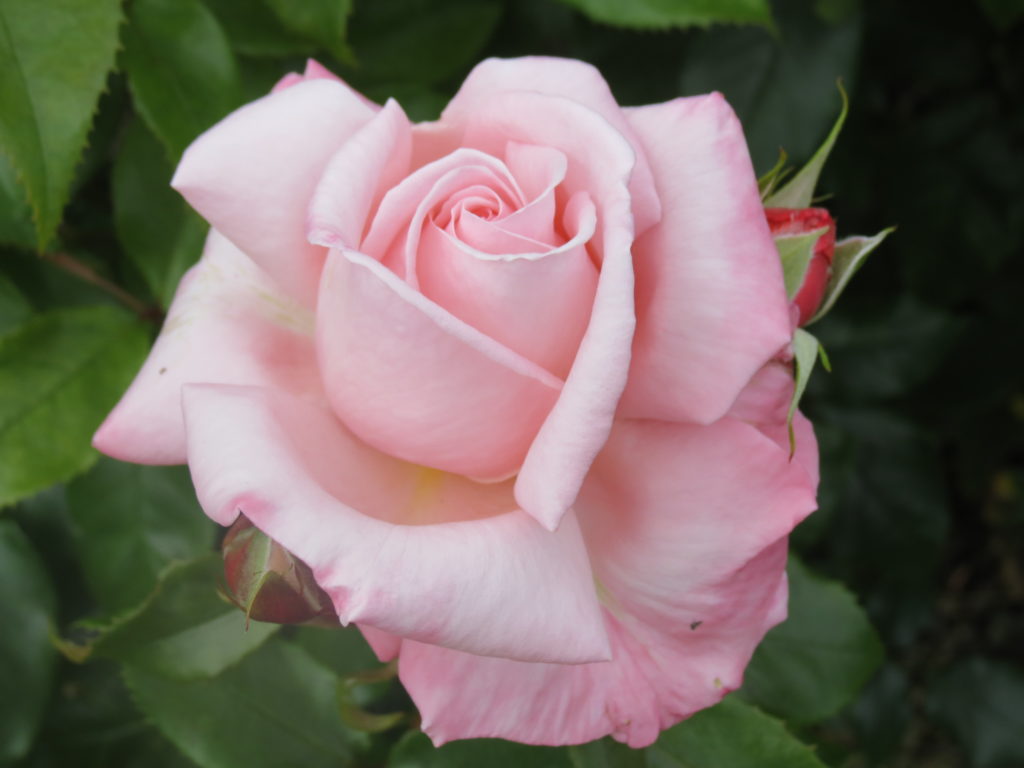
Our environment also plays a huge role in the detection of fragrance. As a general rule, days that are warm, calm and humid offer the best conditions for fragrance to be released while there is often little fragrance to be detected on cold and damp days. Then there are some very strongly scented varieties which a fragrance will be detected almost all of the time.
I sometimes hear also that ‘modern roses have no scent’ and that ‘breeders have bred scent out of roses’. This is not true – what has happened is that over time, those roses with scent have kept on being grown in gardens while those without scent have fallen by the wayside. An informal study I read a number of years ago concluded that one third of all roses have a good scent, another third have little scent and the last third have no scent and that this has remained much the same over time
It is incredibly challenging for rose breeders to breed for fragrance. Cross two highly fragrant roses and you may get nothing in terms of fragrance from the resulting seedlings. Fragrance is also linked genetically to disease tolerance and vase life – often fragrant roses either don’t have the best health or the blooms don’t last the best in a vase. Think about it – those roses you buy from the florist don’t have much scent because they need to be transported long distances from the grower to market.
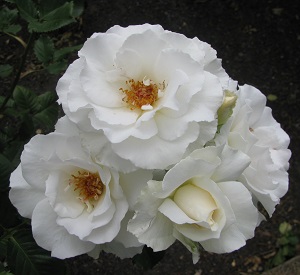 Top five most fragrant roses selected by members of the New Zealand Rose Society 2018
Top five most fragrant roses selected by members of the New Zealand Rose Society 2018
- Margaret Merrill – white
- Aotearoa – pink
- Double Delight – red and white
- Papa Meilland – red
- Blackberry Nip – purple
Some other fragrant roses worthwhile growing
Hybrid Tea
Auckland Metro – white
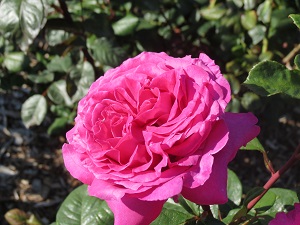 Chartreuse de Parme – magenta pink
Chartreuse de Parme – magenta pink
Clodagh McGredy – apricot
Fragrant Cloud – brick red
Land of the Long White Cloud – white
Lasting Love – dusky red
Magnificent – deep pink
Matawhero Magic – bronzy orange
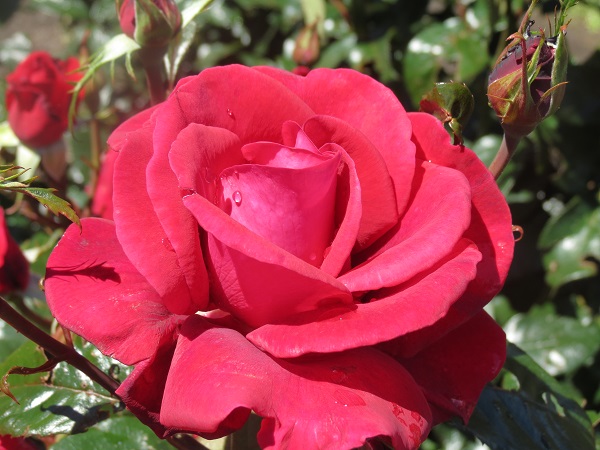
Memorial Day – orchid pink
Mum in a Million – pink
Pope John Paul II – white
Waimarie – mauve pink
Floribunda
Blueberry Hill – Lilac
Friesia – yellow
Midnight Blue – purple
Outta the Blue – magenta/lavender
Scentasia – creamy yellow
 Scentimental – red and white striped
Scentimental – red and white striped
Climbers
Climbing Nahema – soft pink
Compassion – pink/apricot
Fourth of July – red/white striped
Leaping Salmon – salmon pink
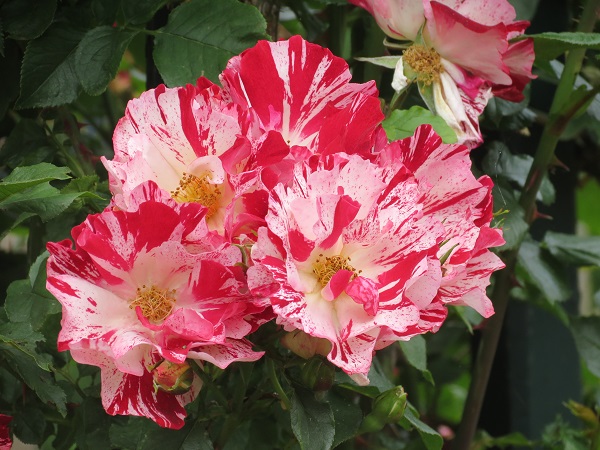
Red Flame – dusky red
Sir Edmund Hillary – creamy white
Taffeta (Patio climber) creamy white
David Austins
Most Austins are fragrant but try the following
Abraham Darby – peachy pink/yellow reverse
Falstaff – deep crimson
Golden Celebration – yellow
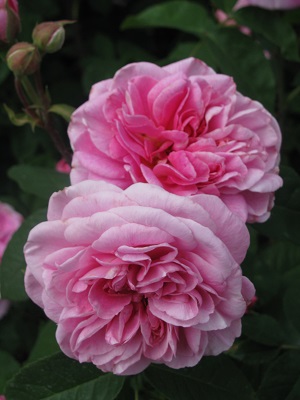 Gertrude Jekyll – pink
Gertrude Jekyll – pink
Mary Rose – rich pink
Wollerton Old Hall – apricot
Miniature/Patio
Few of this type of rose are strongly fragrant but the following have a noticeable fragrance if you can get down to small them!
Beauty Secret – red
Moon River – silvery lavender
Orchid Lace – lavender lilac
Sweet Chariot – lavender purple
Heritage Roses
Many heritage roses are scented so there is plenty to choose from for your garden. Just be aware some only flower once in spring but they sure put on a good display when they do.
In the Rose Garden for August
- Continue to prune roses which should be done by mid month.
- Once pruning is done, tidy up around the roses, pick up any fallen leaves, remove weeds and lightly fork over the ground.
- Apply a winter clean up spray of copper but leave it until a few days after pruning.
- Check stakes and ties on standard roses and renew if required.
- Towards the end of the month and into September, apply a general rose fertiliser to your roses at the recommended rates.
By Hayden Foulds
Hayden also serves as Deputy Chairman of the World Federation of Rose Societies Rose Trials Committee amongst other rose endeavours.







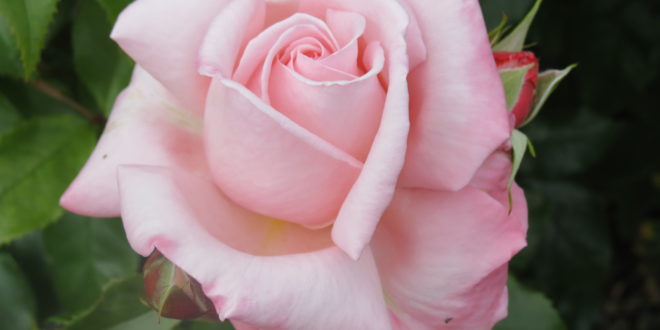


Join the Discussion
Type out your comment here:
You must be logged in to post a comment.